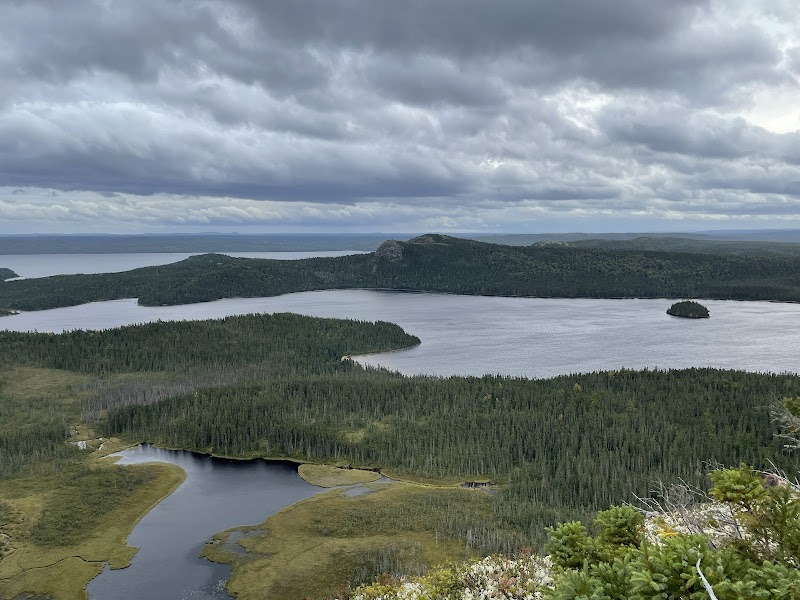Paddling the Pristine Inlets of Alexander Bay: A Kayaker's Guide to Glovertown’s Coastal Adventure
Experience the rugged beauty of Alexander Bay near Glovertown, NL, through an unforgettable kayaking journey. Navigate quiet inlets edged by forested cliffs, encounter local wildlife, and prepare for changing tides with this practical guide designed to get you on the water safely and confidently.
Check Tide Schedules Before You Paddle
Tidal changes in Alexander Bay affect water depth and current strength. Plan your entry and exit around high tide to avoid shallow channels and difficult navigation.
Wear Layered, Waterproof Clothing
Newfoundland’s coastal weather can shift rapidly. Dress in moisture-wicking layers with a waterproof outer layer to stay comfortable throughout your paddle.
Use a Stable, Maneuverable Kayak
The narrow inlets and occasional rocky passages demand a kayak that offers control and stability. Avoid large or heavy boats that limit your ability to navigate tight spaces.
Bring Adequate Hydration and Snacks
While on the water, you’ll expend energy battling currents and adjusting to changing conditions. Pack plenty of water and easy-to-carry snacks for sustained energy.
Paddling the Pristine Inlets of Alexander Bay: A Kayaker's Guide to Glovertown’s Coastal Adventure
Alexander Bay, just outside Glovertown, NL, offers a kayaking experience etched by raw coastal beauty and quiet inlets that challenge and charm every adventurer willing to answer the call of its waters. As you launch your kayak, the bay stretches out like a natural arena, edged by forested cliffs that lean toward the sea, daring you to explore their hidden coves and secrets. The water itself moves with a purposeful current, encouraging forward momentum while testing your navigation skills between rocky outcrops and gentle tides.
Covering roughly 8 to 12 kilometers depending on your route, paddling here is more than movement; it’s a vivid engagement with a landscape fiercely itself. The inlets are carved by time, their walls steep with moss and pine, sometimes opening to reveal sweeping coastal views that reward steady effort with silent panoramas.
Planning your trip is straightforward but requires consideration. Tides govern entry and exit points, so check local tide charts to avoid being caught in shallow moraines or strong ebb currents. A high-quality kayak with sturdy hull integrity and good maneuverability is essential, as the narrow passages can swiftly become technical with wind and shifting waves. Weather in Newfoundland tends to change abruptly; pack layered clothing and waterproof gear to stay dry and comfortable.
Landings are limited but available on select pebble beaches and grassy shores. These spots provide rest breaks and chances to stretch legs on rugged terrain, where you feel the sharp contrast between rock and soft undergrowth.
Enjoy the wildlife that commands this coast—curious harbor seals often peek above the waves, while bald eagles cruise overhead, surveying their domain. Respect the environment by packing out all waste and avoiding disturbance to nesting sites.
To get the most from this kayaking adventure, aim for late spring through early fall when conditions are warmer, and daylight lingers. Early mornings invite calm seas and golden light perfect for photography, while midday brings sharper waters and deeper exploration.
Alexander Bay is not just a paddle; it’s an encounter with a fiercely independent coastline shaped by wind, water, and time. With solid preparation and a spirit ready to embrace challenge, your journey through these inlets is as practical as it is inspiring—a direct line to one of Newfoundland’s most captivating coastal experiences.
Nearby Trips
All Adventures
Boat Charters
Water Activities
Adventures near Glovertown
Discover the unique and memorable adventures that make Glovertown special.
Frequently Asked Questions
What is the best way to access Alexander Bay for kayaking?
Access is typically from a small launch point near Glovertown, with parking available nearby. It’s advisable to arrive early to secure your spot and check tide times before launching.
Are there guided tours available in Alexander Bay?
While Alexander Bay is less commercialized, local outfitters in Glovertown offer guided kayak tours that provide equipment, safety instructions, and expertly planned routes.
How challenging are the currents in Alexander Bay?
Currents vary with the tide and weather. At slack tide, conditions are milder, but during rising or falling tides, currents can push forcefully, requiring paddlers to maintain control and stay alert.
What wildlife can I expect to see while kayaking here?
Harbor seals are common, often curious about paddlers. Bald eagles soar overhead, and migratory birds make seasonal appearances. Keep a respectful distance to avoid disturbing animals.
Can I camp along the shorelines of Alexander Bay?
There are a few informal, rugged spots suitable for short camping on pebble beaches or grassy patches, but no formal campsites. Always follow Leave No Trace principles and check local regulations.
What safety precautions should I take when kayaking in Alexander Bay?
Check tide tables, wear a PFD, dress for changing weather, carry a whistle or signaling device, and let someone know your planned route and expected return time.
Recommended Gear
Sit-on-top or Touring Kayak
A stable, maneuverable kayak suited for coastal waters is essential to navigate narrow inlets and variable currents safely.
Personal Flotation Device (PFD)
Safety comes first; always wear a properly fitted PFD while on the water regardless of kayaking skill.
Waterproof Dry Bag
Keep your essentials dry—food, electronics, and extra clothing—in a secure dry bag.
Layered Quick-Dry Clothing
Waterproof outer layers combined with moisture-wicking base layers help maintain comfort amid coastal weather shifts.
Local Insights
Hidden Gems
- "A secluded pebble beach at the eastern inlet offers a quiet break spot with views of the bay’s rugged cliffs."
- "A moss-covered rock formation toward the northern inlet provides a unique vantage point favored by local kayakers."
Wildlife
- "Harbor seals frequently raise their heads above water near quiet coves."
- "Bald eagles use coastal thermals here, especially in spring and fall migrations."
History
"Alexander Bay area was used historically by local fishermen and indigenous groups who relied on the rich marine resources. Some old fishing shacks still stand, reminders of early coastal livelihoods."
